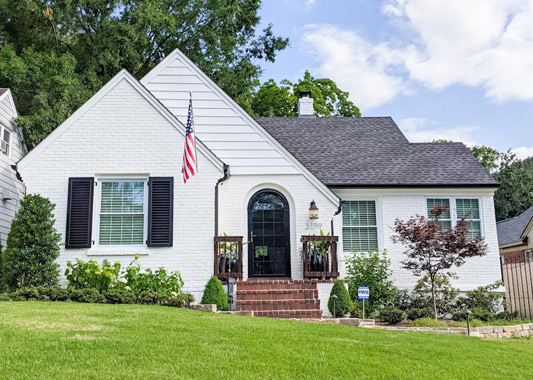The EPA estimates that 10% of all paint purchased in the US becomes “leftover” paint living in old paint cans in our garages. So, what should you do with it? Today, I’ll guide you through the proper way to dispose of leftover Romabio mineral-based paints, and how our products differ from acrylic or latex.
Two common things you will do with leftover paint:
- Storage
- Disposal
Let’s start with storage. It’s worth keeping your paint if you have about 20% or more left in the bucket – especially if you want to touch up your wall or use the leftover paint on a craft project. However, if you have less than 20% leftover – or you’re not planning on using the paint on any additional projects or crafts, we recommend you dispose of the leftover paint properly.
While Romabio mineral-based paints must be diluted with water before application, you can store our paints UNDILUTED, the same way you store acrylic or latex. This includes all Romabio paints like Classico Limewash, our Masonry Paints and the popular Lime Slurry. If you use a separate mixing bucket, your leftover, undiluted paint should be perfect for storage.
4 Steps to Proper Paint Storage
-
- Put a cyclophane wrap over the top of the opened bucket to reduce oxygen exposure to the paint
- Place the lid back on and secure it tightly using a hammer or anything heavy for an airtight closure
- Turn the paint upside down, after the lid is securely on, to keep oxygen out
- Store in a cool, dry location, not in direct sun or an area where the paint could freeze
- PRO Tip: label the paint bucket with the date, specific color and room where it was used
How long will paint last after it’s stored?
Properly stored, undiluted paint can last one year or even three. It depends on the environment the paint is stored in, including the temperature and the amount of oxygen and moisture in the bucket and storage area. Due to the clean ingredients and lack of biocides added, Romabio mineral paints won’t last quite as long in storage as acrylic or latex, but if you follow the instructions above, your stored paint will last longer!
An added benefit to our products not having harsh chemicals and biocides, is that you don’t need to worry about them being flammable or combustible when stored. For more information on the types of paint that are flammable, combustible or both, check out this blog post from Firefighter Insider.
Note: If you added water directly to the paint bucket, your leftover, diluted paint will not last for too long (7 – 10 days depending on temperature and exposure to oxygen and sun) and it would be best to dispose of it all together if you’re not planning on using it again.
When do you know if stored your paint is still good to use?
After you open a paint bucket that’s been properly stored, make note whether there’s a lot of buildup or mold at the top of the bucket. If there is, then the paint should be disposed. If the paint looks good, double check and make sure it will apply properly. To perform this test, mix the paint for 15-30 seconds to see if the consistency looks good and color looks correct. The next step is to properly dilute the paint and apply it to a test area.
PRO Tip: We recommend testing your stored paint on white cardboard and comparing it to the original painted area to make sure the color is uniform, and the surface is free of visible particles.
Disposing of your leftover paint is the second option.
Do this if you have a minimal amount of leftover paint or if it’s unusable, old paint
Dispose, Donate or Recycle.
Romabio’s non-toxic paints have a notable advantage over acrylic or latex. Do you know our paints are non-toxic and environmentally friendly so you can wash them directly down a sink or outside? It’s true! But be careful not to wash paint directly on grass or vegetation like flowers because the high pH of our products may irritate them.
PRO Tip: Wash your mixing or paint bucket out with the garden hose on your driveway, street, dirt, or pine straw areas. Leslie and I recently painted a room in our basement, and I just washed the little amount of leftover paint directly onto our street since it’s non-toxic and it could flow directly into the drain.
To dispose of the paint and bucket, first check with your local municipal or county government as requirements vary based on where you live. Earth911 is a good resource with details on the disposal of leftover paint.
If you live in an area that allows you to throw your paint and bucket directly into the trash, wait for the paint to dry out some first. Sit the bucket in the sun and add kitty litter or shredded newspaper to absorb the liquid. Then, secure the lid and throw the bucket into the trash.
Donating is another great option for disposal. Give your leftover paint to a friend, local artist or a non-profit to use in another great project. Romabio often donates paint from our warehouse to our favorite charities.
I hope these tips are helpful when you are figuring out what to do with leftover paint! Keep following us as we will have some creative ideas to share next!
Thank you for choosing Romabio and happy painting,
Michael




 Photo Credit: Caldwell House, TN
Photo Credit: Caldwell House, TN